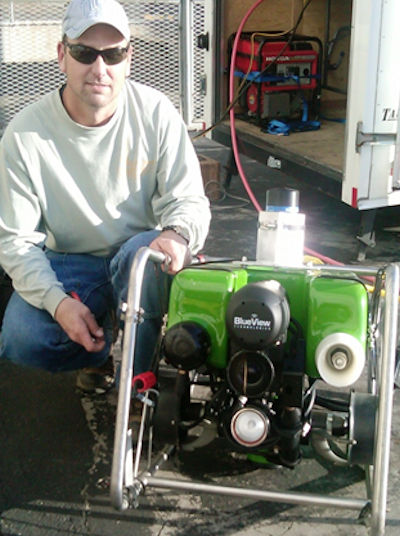30.F Equipment Requirements.
30.F.01 Equipment modifications, repairs, tests, calibrations, or maintenance must be recorded by means of a tagging or logging system, and include the date and nature of work performed and the name of the individual performing the work.
30.F.02 Air compressor systems used on-site as a direct source to supply air to SSA divers (Direct Source Compressors) must be equipped with a volume tank with a check valve on the inlet side, a pressure gauge, a relief valve, and a drain valve.
30.F.03 Direct Source compressors must be of sufficient capacity to overcome any line loss or other losses and deliver a minimum 4.5 ft3 (2.1 l/s), actual, or a delivery amount (cfm) as set by the helmet manufacturer, to each diver at the maximum diving depth.
30.F.04 All air compressor intakes must be located away from/upwind of areas containing exhaust or other contaminants.
- All must be equipped with appropriate in-line air purifying absorbent beds and/or filters inserted into the supply line to assure breathing air quality.
- Oil-lubricated compressors containing a petroleum or potential CO-producing lubricant for the air pressurization pistons will not be used.
- All monitor/alarm systems must be so designed with a visual and/or audio alarm and placed so that the dive supervisor will be made aware of the hazardous conditions.
- Direct Source compressors must be equipped specifically for their intended use and must have a suitable approved means to regulate the pressure and a low air pressure alarm in the system. In addition, they will have a Carbon Monoxide (CO) monitor with alarm in the following situations:
- (1) The compressor is powered by an internal combustion engine,
- (2) Compressors used in close proximity to internal combustion engines that may/will be running during dive operations (boat motors, generators, cranes, etc.). Air intake pipes must be placed away from/upwind of the exhaust source;
- (3) Fueling a compressor during operation must not be allowed.
Testing Air Compressor System
30.F.05 Air compressor systems will be tested by means of sampling at the connection to the distribution system.
- All air compressors with a working pressure greater than 500 psi will be tested every six months by an accredited testing laboratory.
- Compressors with a working pressure less than 500 psi may be tested in-house with documentation every six months and must be tested by an accredited testing laboratory every two years. Lab accreditation must be from NIST/NVLAP, American Association of Laboratory Accreditation (A2LA - for environmental or calibration) or similar recognized accreditation.
- Purchased air must be certified by the supplier that it has been tested and meets the standards below.
- A copy of the certificate of analysis showing the breathing air meets the minimum acceptable criteria must be provided to the GDA.
- Air purity standards are as follows:
- (1) Air must not contain a level of carbon monoxide greater than 10 ppm;
- (2) Air must not contain a level of carbon dioxide greater than 1,000 ppm;
- (3) Air must not contain a level of oil mist greater than 5 mg/m3;
- (4) Air must not contain a level of hydrocarbons other than methane greater than 25 ppm; and
- (5) Air must not contain a noxious or pronounced odor.
Knowledge Check Choose the best answer for the question.
30-15. What is the maximum level of carbon monoxide for air compressors?
You forgot to answer the question!


